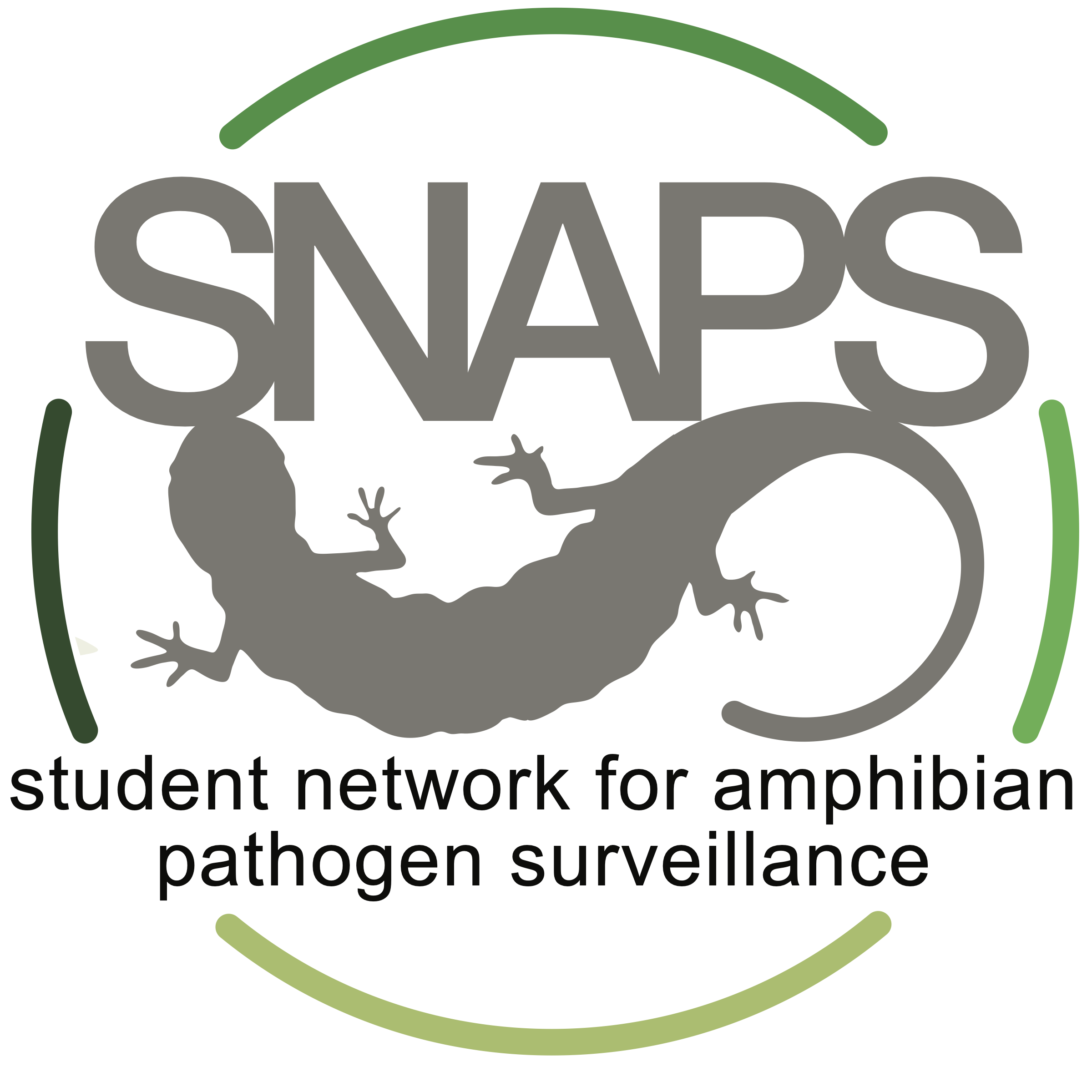Our mission is to facilitate and coordinate the surveillance and monitoring of Bsal in North America.
Bsal is yet to be detected in North America, but its accidental introduction is likely. Once here, Bsal will threaten this continent’s rich salamander diversity. We can minimize Bsal’s negative impact by detecting it early in its invasion, thereby allowing for a more timely and effective response. Unfortunately, early detection is inherently challenging because it requires broad spatiotemporal surveillance that can be expensive, time-consuming and logistically challenging.
 To address these challenges, we developed a program that incorporates Bsal surveillance into undergraduate curriculum called Student Network for Amphibian Pathogen Surveillance or SNAPS. This novel approach will achieve an on-going, broad, and sustainable surveillance effort while also engaging college students in experiential learning. We are coordinating with the Data Management Working Group to compile and disseminate the results from this novel surveillance program, as well as the Bsal surveillance results from other investigators. Finally, we are looking ahead to the likely introduction of Bsal and preparing guidelines for Bsal monitoring once it has been detected in North America.
To address these challenges, we developed a program that incorporates Bsal surveillance into undergraduate curriculum called Student Network for Amphibian Pathogen Surveillance or SNAPS. This novel approach will achieve an on-going, broad, and sustainable surveillance effort while also engaging college students in experiential learning. We are coordinating with the Data Management Working Group to compile and disseminate the results from this novel surveillance program, as well as the Bsal surveillance results from other investigators. Finally, we are looking ahead to the likely introduction of Bsal and preparing guidelines for Bsal monitoring once it has been detected in North America.
Our vision is the early detection of Bsal, followed by ongoing monitoring, to allow for an effective response that will accomplish our ultimate goal of conserving biodiversity.
Member List:
Group Leads:
Brittany Mosher, University of Vermont, Rubenstein School of Environment and Natural Resources
Olya Milenkaya, Warren Wilson College
Jenifer Walke, Eastern Washington University
Michael Adams, USGS Amphibian Research and Monitoring Initiative
Dan Grear, USGS National Wildlife Health Center
Sasha Greenspan, University of Alabama
Oliver Hyman, James Madison University
Michelle Koo, AmphibiaWeb & Museum of Vertebrate Zoology / UC Berkeley
Vance T. Vredenburg, San Francisco State University
Additional members are welcomed!
Please contact one of the Co-Chairs to join.
